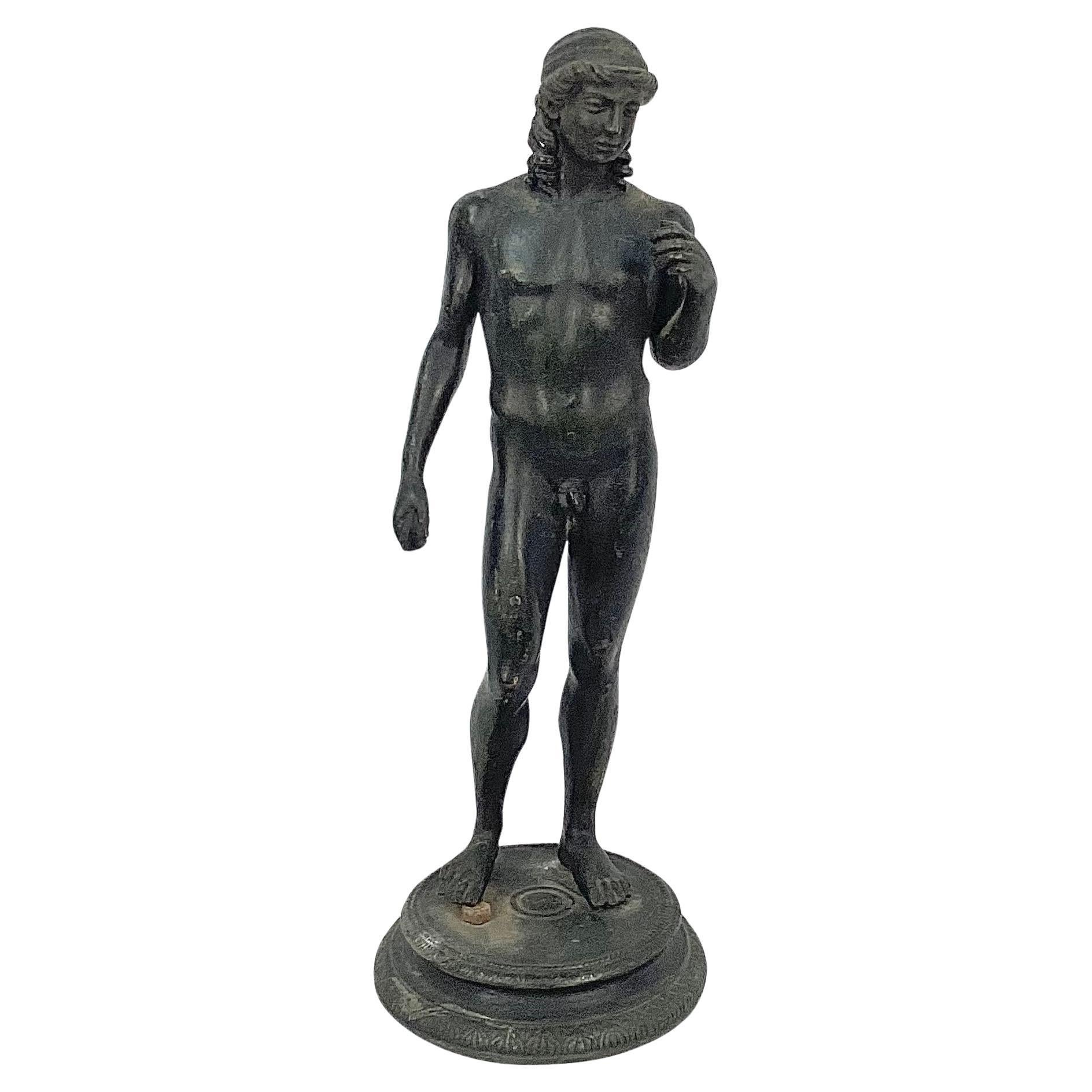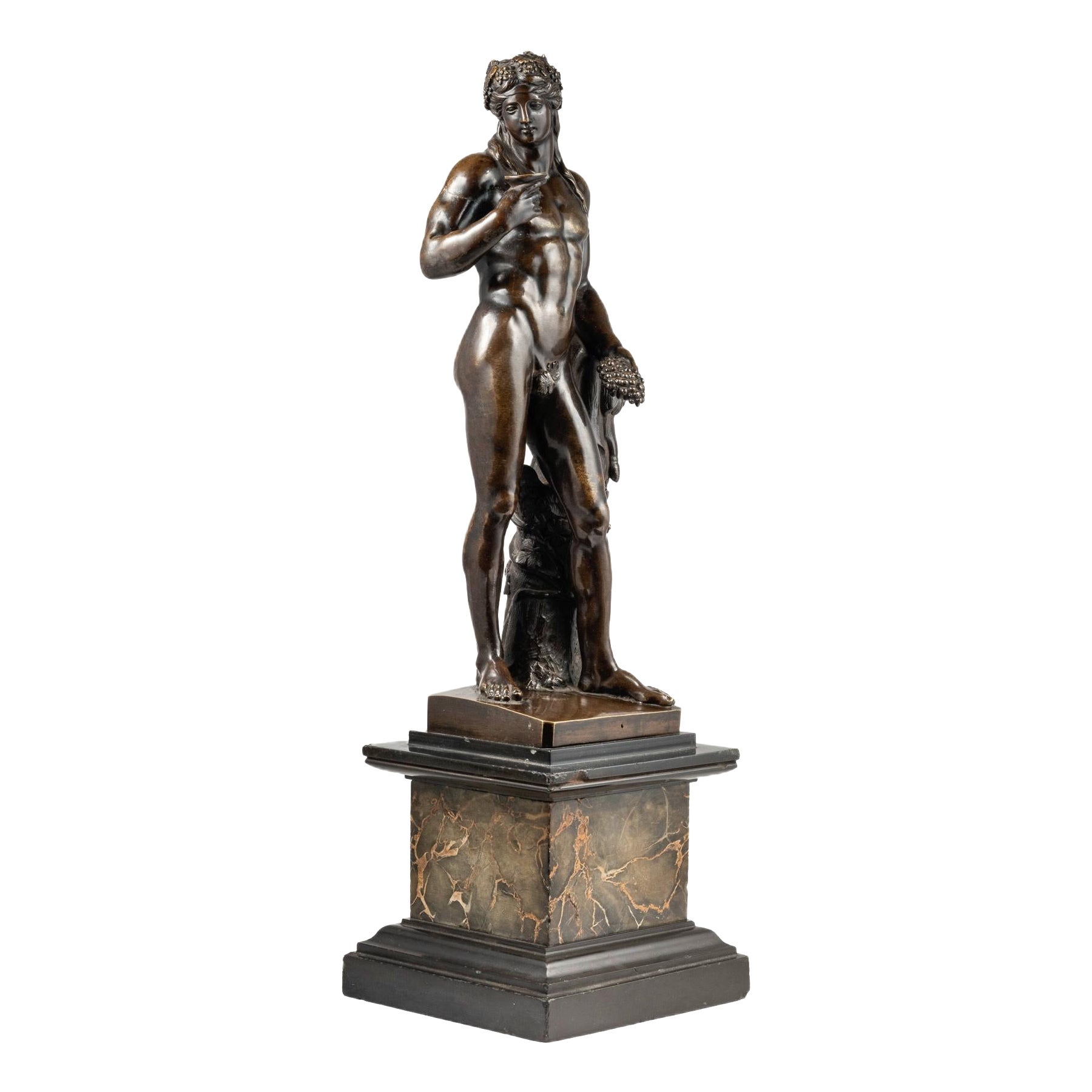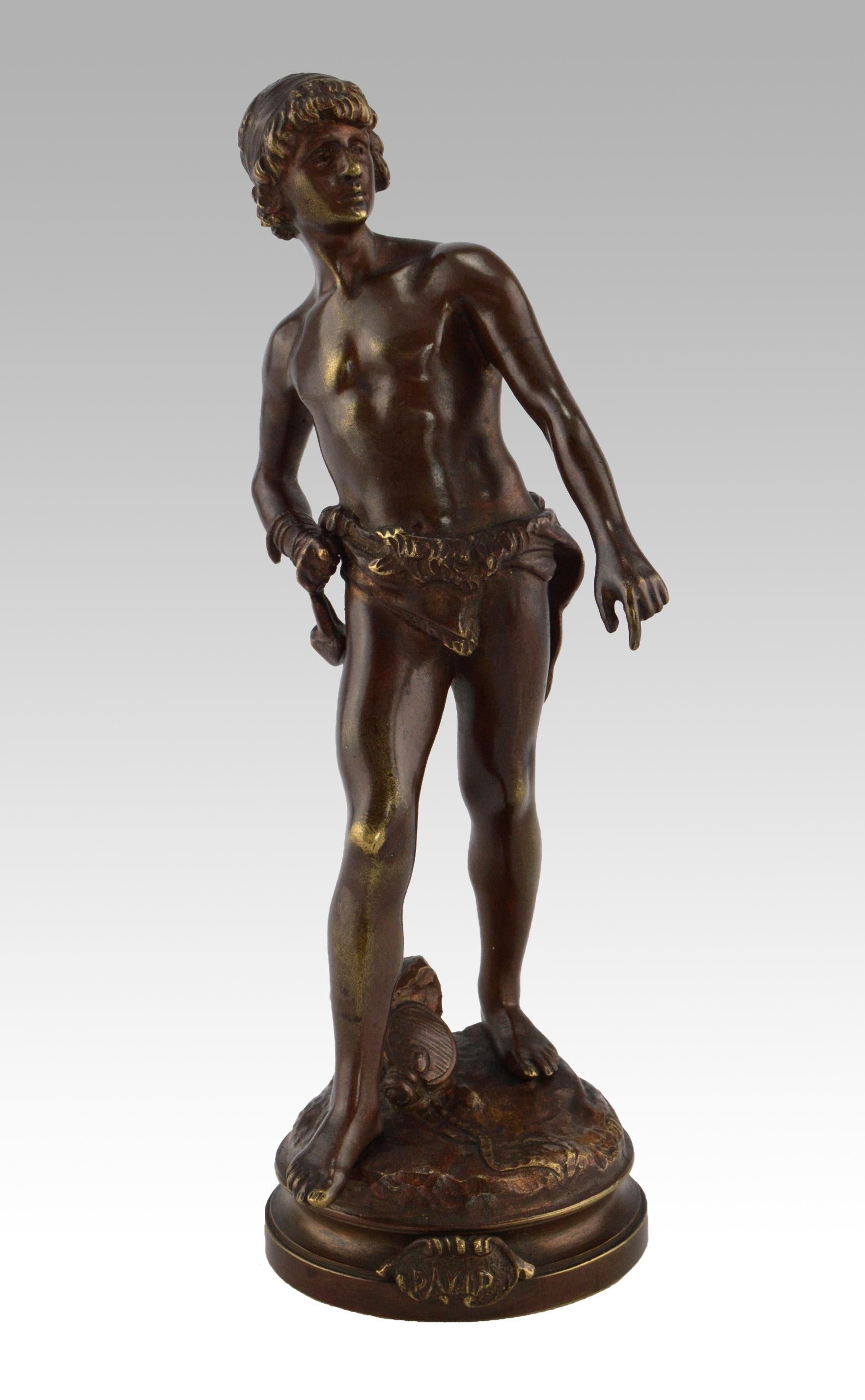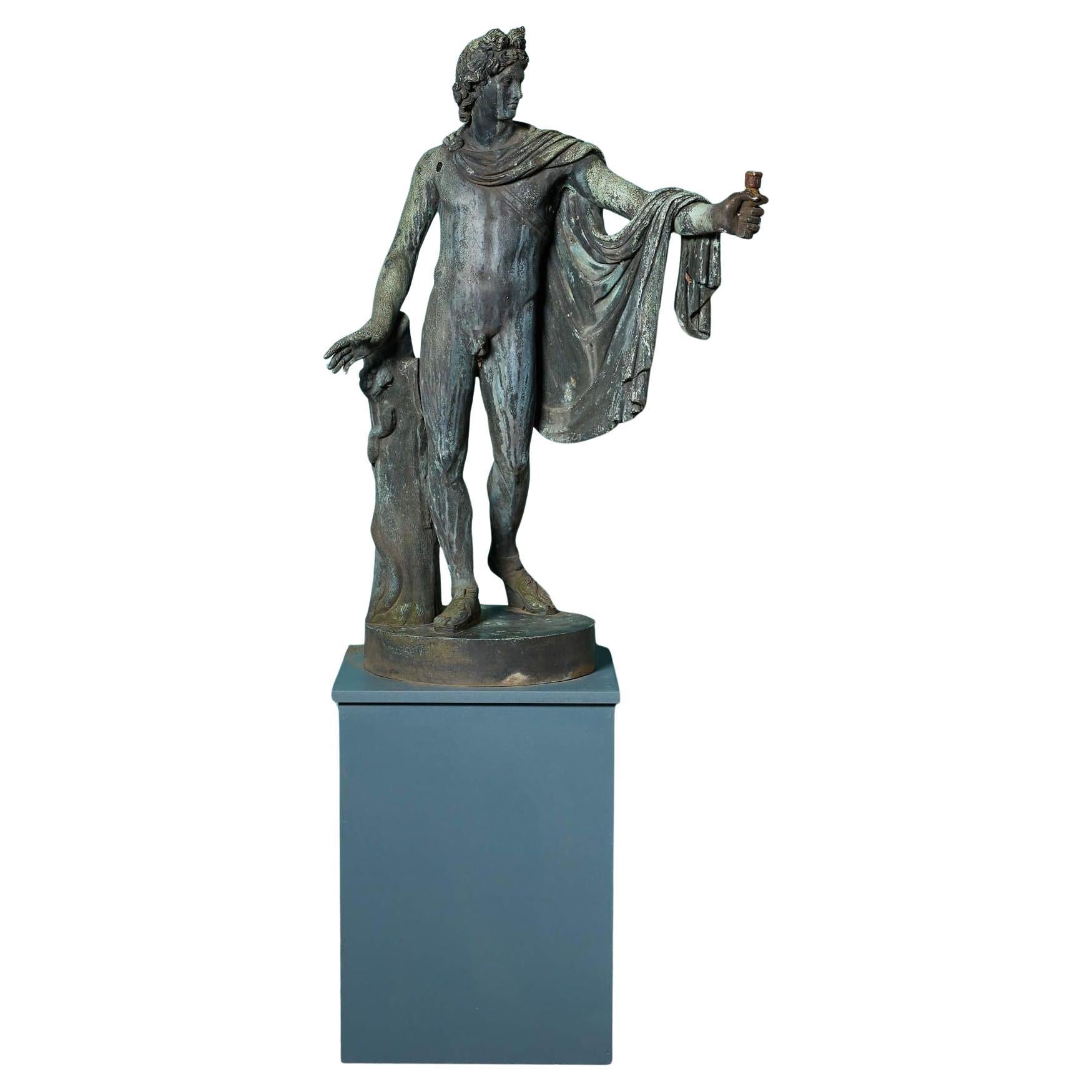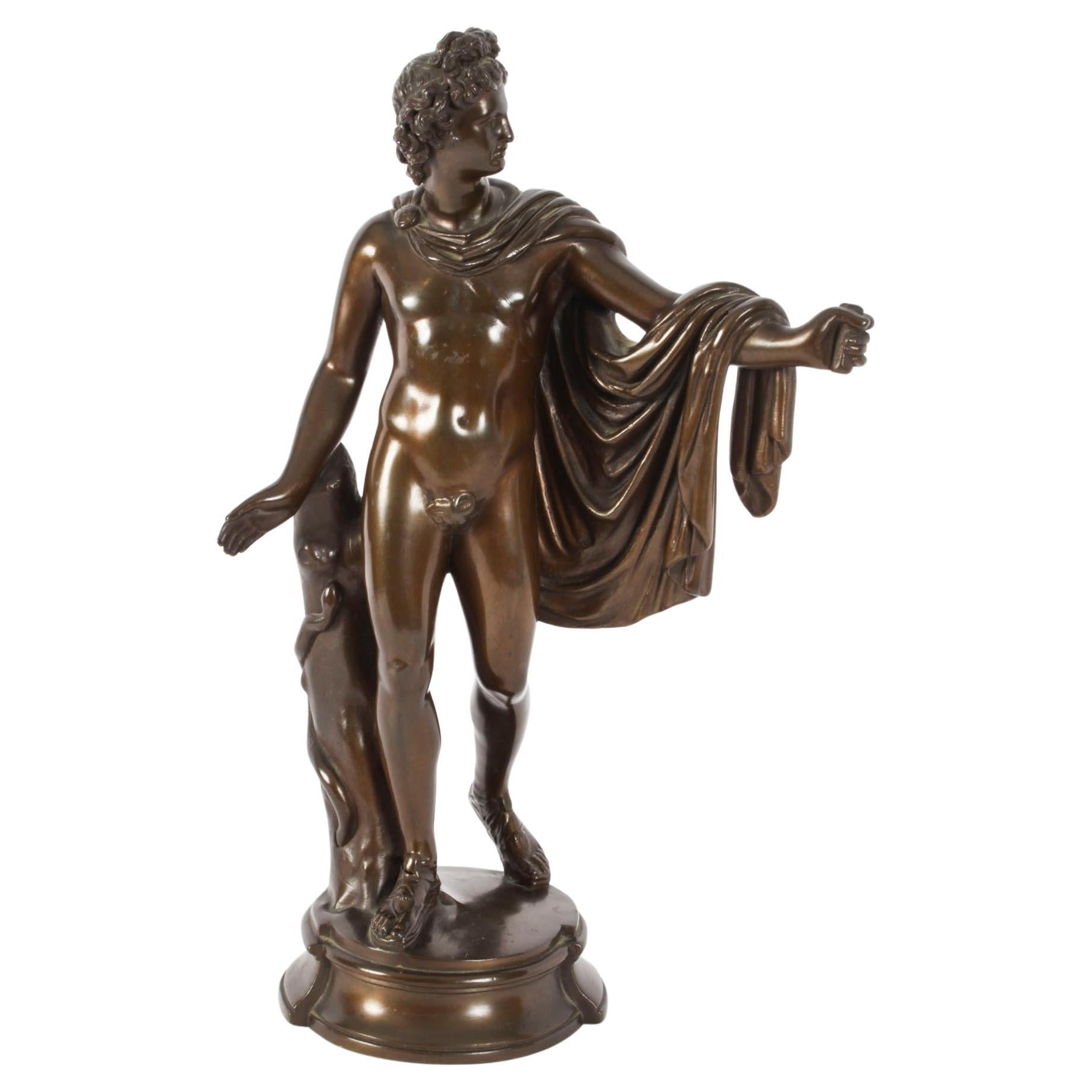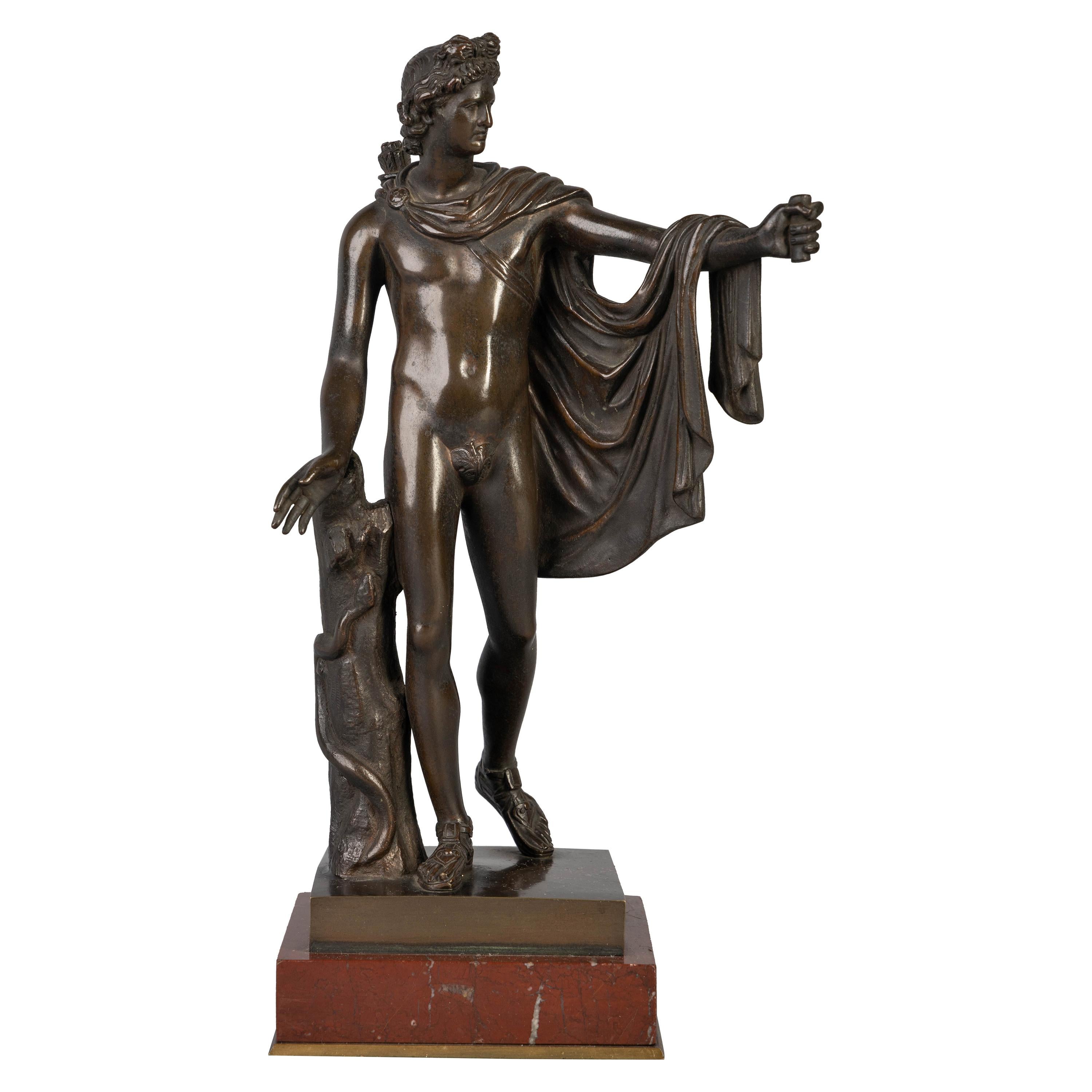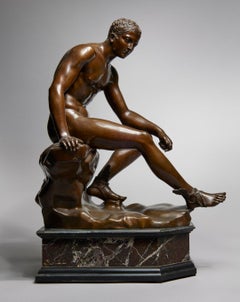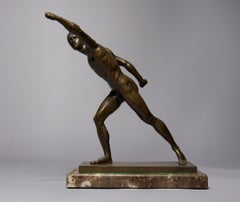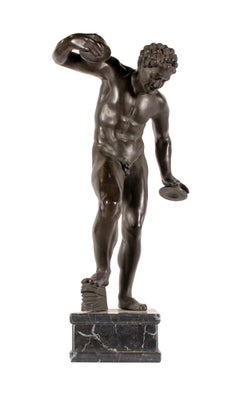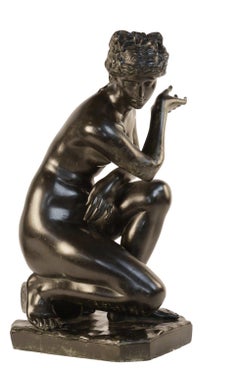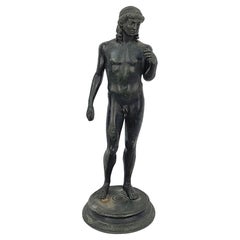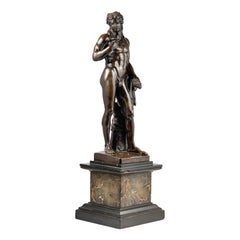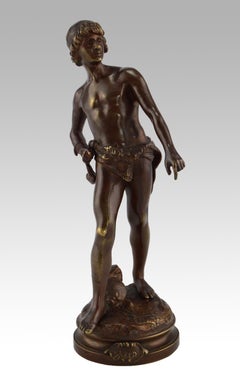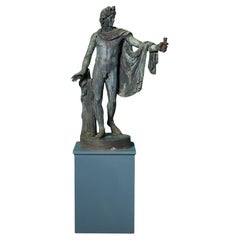Items Similar to Grand Tour Bronze Sculpture of Dionysus, 19th Century Italian School
Video Loading
Want more images or videos?
Request additional images or videos from the seller
1 of 19
UnknownGrand Tour Bronze Sculpture of Dionysus, 19th Century Italian School
$4,000
£3,021.22
€3,491.66
CA$5,610.61
A$6,240.44
CHF 3,266.11
MX$76,112.81
NOK 41,039.90
SEK 38,603.33
DKK 26,061.82
About the Item
19th Century Italian School
Grand Tour Bronze Sculpture of Dionysus, 19th Century
Bronze with black-green patination
24 x 10 x 10 inches
Dionysus, in Greco-Roman religion, a nature god of fruitfulness and vegetation, especially known as a god of wine and ecstasy. The occurrence of his name on a Linear B tablet (13th century BCE) shows that he was already worshipped in the Mycenaean period, although it is not known where his cult originated. In all the legends of his cult, he is depicted as having foreign origins.
Praxiteles: Hermes Carrying the Infant Dionysus
Praxiteles: Hermes Carrying the Infant Dionysus
Hermes Carrying the Infant Dionysus, marble statue by Praxiteles, c. 350–330 BCE (or a Hellenistic copy of his original); in the Archaeological Museum, Olympia, Greece. Height 2.15 metres.
Dionysus was the son of Zeus and Semele, a daughter of Cadmus (king of Thebes). Out of jealousy, Hera, the wife of Zeus, persuaded the pregnant Semele to prove her lover’s divinity by requesting that he appear in his real person. Zeus complied, but his power was too great for the mortal Semele, who was blasted with thunderbolts. However, Zeus saved his son by sewing him up in his thigh and keeping him there until he reached maturity, so that he was twice born. Dionysus was then conveyed by the god Hermes to be brought up by the bacchantes (maenads, or thyiads) of Nysa, a purely imaginary spot.
- Dimensions:Height: 24 in (60.96 cm)Width: 10 in (25.4 cm)Depth: 10 in (25.4 cm)
- Medium:
- Movement & Style:
- Period:
- Condition:
- Gallery Location:Beachwood, OH
- Reference Number:1stDibs: LU1768213616212
About the Seller
5.0
Platinum Seller
Premium sellers with a 4.7+ rating and 24-hour response times
Established in 1975
1stDibs seller since 2022
37 sales on 1stDibs
Typical response time: <1 hour
- ShippingRetrieving quote...Shipping from: Beachwood, OH
- Return Policy
Authenticity Guarantee
In the unlikely event there’s an issue with an item’s authenticity, contact us within 1 year for a full refund. DetailsMoney-Back Guarantee
If your item is not as described, is damaged in transit, or does not arrive, contact us within 7 days for a full refund. Details24-Hour Cancellation
You have a 24-hour grace period in which to reconsider your purchase, with no questions asked.Vetted Professional Sellers
Our world-class sellers must adhere to strict standards for service and quality, maintaining the integrity of our listings.Price-Match Guarantee
If you find that a seller listed the same item for a lower price elsewhere, we’ll match it.Trusted Global Delivery
Our best-in-class carrier network provides specialized shipping options worldwide, including custom delivery.More From This Seller
View AllGrand Tour Bronze Figure of Seated Hermes, Early 19th Century After the Antique
Located in Beachwood, OH
Large Figure of Seated Hermes, Grand Tour Bronze, Early 19th Century
19th Century Continental School After the Antique
The large size figure well cast, with brownish green patination...
Category
Early 19th Century Figurative Sculptures
Materials
Marble, Bronze
19th Century Bronze of the Borghese Gladiator Sculpture
Located in Beachwood, OH
The Borghese Gladiator, 19th Century
Bronze on marble base
Musée du Louvre signed on base
15 x 12 x 8 inches
Since its discovery in the early seventeenth century, the Borghese Gladi...
Category
19th Century Figurative Sculptures
Materials
Marble, Bronze
Satyr with Cymbals and Kroupezion, Grand Tour after the Antique, 19th century
Located in Beachwood, OH
19TH CENTURY CONTINENTAL SCHOOL
Satyr with Cymbals and Kroupezion, Grand Tour after the Antique
Bronze with marble base
26 in. h. x 15 in. w. x 10 in. d.
This dancing faun is now mo...
Category
19th Century Figurative Sculptures
Materials
Marble, Bronze
19th Century Bronze Figure of Crouching Venus or Naked Aphrodite
Located in Beachwood, OH
19th Century Bronze Figure of Crouching Venus or Naked Aphrodite
Bronze with dark patination
22.5 x 13 x 11 inches
The Crouching Venus is a Hellenisti...
Category
19th Century Figurative Sculptures
Materials
Bronze
Italian Bronze Sculpture of Nude Woman, Mid 20th Century
Located in Beachwood, OH
Mario Spampinato (Italian 1912–2000)
Nude
Bronze
Signed on base
17.5 in. h. x 5.75 in. w. x 6 in. d.
The artist was born, raised and trained in Italy. During one of his exhibits (at San Marcos in Rome) the Director of a New York Gallery asked him to come to New York to work for him. The American Consul, before issuing his visa, asked Spampinato to create a bust of him. In exchange, the Consul paid for his passage on the boat to New York. In New York, he worked with his brother Clemente Spampinato who is a well known sculptor as well.
After moving to Chicago in 1954, he discovered that there was no foundry in the Midwest that could cast his bronzes. So, he opened his own foundry called the Spampinato Art Foundry, casting in the lost wax process. He also started his own private school (Spampinato Art Workshop, Ltd) and did some teaching at the University of Chicago and conducted seminars at Lawrence University in Kansas.
Many of his own works are pictured and cataloged in Volumes 2 & 3 of Bronzes: Sculptors and Founders, 1800-1930 by Harold Berman.
Between 1959 and 1967, Spampinato recast a number of Charles M Russell...
Category
Mid-20th Century Figurative Sculptures
Materials
Bronze
19th Century Grand Tour Figure of Sophocles after the Antique, F. Barbidienne
Located in Beachwood, OH
19th Century Grand Tour after the Antique
Figure of Sophocles
Bronze with green patination
Signed F. Barbidienne, Fondeur
25 x 8.5 x 6.5 inches
Standing figure of the Greek poet, we...
Category
19th Century Figurative Sculptures
Materials
Bronze
You May Also Like
Grand Tour Bronze Statue Of Dionysus
Located in Bradenton, FL
19th century Grand Tour bronze statue of the ancient Greek Dionysus. Dionysus also known as Bacchus, was the god of wine, fertility and festiv...
Category
Antique 19th Century Italian Grand Tour Figurative Sculptures
Materials
Bronze
18/19th C. Italian Neoclassical Patinated Bronze Sculpture of Bacchus
Located in New York, NY
A Rare and Exquisite Late 18th to Early 19th Century Italian Neoclassical Patinated Bronze Sculpture of Bacchus, God of Wine, Fertility, and Revelry.
This superbly cast and finely m...
Category
Antique 1790s Italian Neoclassical Figurative Sculptures
Materials
Marble, Bronze
19th Century bronze sculpture of David
By Louis Auguste Moreau
Located in Nr Broadway, Worcestershire
Louis Auguste Moreau
French, (1855-1919)
David
Bronze, signed
Height: 7.5 inches
Width: 3.25 inches
Depth: 3 inches
Louis Auguste Moreau was born in Dijon, France in 1855 into a fam...
Category
19th Century Victorian Figurative Sculptures
Materials
Bronze
Italian Grand Tour Bronze of The Apollo Belvedere
Located in Wormelow, Herefordshire
An antique Italian Grand Tour bronze sculpture of ‘The Apollo Belvedere’ circa 1890, after the antique. Sourced from an ex. private UK collection.
Dating from the late 19th century,...
Category
Antique Late 19th Century Italian Neoclassical Figurative Sculptures
Materials
Metal, Bronze
Antique Victorian Bronze Sculpture of Greek God Apollo 19th Century
Located in London, GB
This is a truly magnificent antique Victorian patinated bronze sculpture of the famous Greek God Apollo, modelled upon a shaped circular socle, inscribed monogram 'NF' and numbered 2...
Category
Antique 1860s English Victorian Figurative Sculptures
Materials
Bronze
French Bronze Figure of the Apollo Belvedere
Located in New York, NY
Stamped A.V., on a square red marble base.
Category
Antique 19th Century French Figurative Sculptures
Materials
Bronze
More Ways To Browse
19th Century Italian Art
Greek Bronze Sculptures
Grand Tour Bronze
19th Century Grand Tour Bronze
Antique Grand Tour Bronze Sculpture
Italian Grand Tour Bronzes
19th Century Italian Grand Bronze
Zeus Italy
Bronze Hermes
Antique Italian Bronze Statue
Grand Tour Bronze Roman
Sculpture Of Zeus
Hermes Greek
Green Bronze Statue
19th Century Italian Grand Tour Bronze Sculpture
Antique Roman Bronze Statues
24inch Bronze Sculpture
Hellenistic Gold
